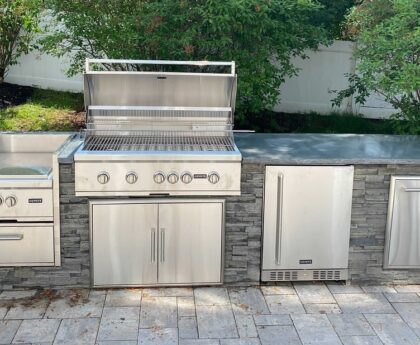Key Takeaways:
- Porcelain countertop costs vary based on material quality, thickness, and installation complexity.
- Higher-quality porcelain is often more durable and visually appealing, offering long-term savings.
- Thickness of slabs generally influences pricing; thicker slabs can enhance aesthetics but may require specialized installation.
- Hiring professional installers is advisable due to the weight and handling complexities of porcelain slabs.
- Hidden costs, like maintenance and repairs, must be factored into the overall investment in porcelain countertops.
- Porcelain countertops are non-porous, reducing maintenance costs compared to granite, which requires sealing to prevent stains.
- Porcelain can offer better long-term value and aesthetic appeal compared to alternatives like quartz and granite.
- Timing purchases during seasonal sales can lead to significant savings on porcelain countertops.
- DIY installation can save costs but poses risks of damage; professional installation is recommended for best results.
- Gather multiple quotes from contractors to negotiate costs effectively and to find a good fit for your budget and needs.
Decoding the Price Tag: What Affects Porcelain Countertops Cost?
When diving into the world of countertops, the decision can often be overwhelming, especially when it comes to understanding the costs associated with porcelain countertops. Many homeowners may assume that all porcelain countertops are created equal, but various factors affect the price tag. In this section, we’ll break down the nuances of porcelain countertop pricing to give you a clearer picture of what you should expect to spend.
Material Quality: Is High-End Always Better?
The quality of porcelain material can significantly influence its cost. High-end porcelain options, made from premium raw materials and manufactured under stricter quality controls, are often more durable and visually appealing than lower-tier alternatives. These premium products might also carry unique aesthetic qualities, such as complex patterns or colors that mimic natural stone. Conversely, entry-level porcelain may be thinner or lack durability and resistance to scratches and stains. As such, while opting for the highest quality material may seem like an unnecessary expense at first glance, it could save you from future repair costs and contribute to a more elevated home aesthetic.
Thickness vs. Price: Do Thicker Slabs Mean Better Value?
Thickness plays a crucial role in the pricing of porcelain slabs. Typically, porcelain countertops are available in various thicknesses ranging from 6mm to 20mm. Thicker slabs usually command a higher price due to the increased material costs and manufacturing intricacies involved in producing these slabs. While some homeowners may assume that a thicker slab translates to better durability, it’s essential to consider the overall installation context. A thicker slab can look more luxurious and may withstand force better, but it might also require specialized installation techniques. Ultimately, opting for a moderate thickness could be a balance between cost and durability, making it prudent to consult with your contractor about the optimal thickness based on your usage and kitchen layout.
Installation Fees: What Should You Expect?
Installation fees can often come as a surprise to homeowners, as they can account for a significant portion of the total cost of porcelain countertops. Professional installation is highly recommended given the weight of porcelain slabs and the intricacies involved in fitting them correctly. Labor costs can vary based on your geographical location, complexity of the installation, and experience of the contractor. Additional expenses might arise from custom cuts or integrated features such as sinks and backsplashes, which will also need precise measurements and fittings. As the phrase goes, “You get what you pay for,” so investing in a reputable contractor can minimize the risk of damage during installation, ultimately protecting your investment.
The Hidden Costs: Beyond Just the Surface Price
While the initial porcelain countertops cost might look enticing, homeowners must consider hidden costs that can make a considerable impact on the overall investment. Below, we explore various dimensions of expenses commonly overlooked during budgeting.
Maintenance and Durability: What You Need to Know
The promise of low maintenance is one of porcelain’s most attractive features. Unlike some other countertop materials, porcelain is inherently resistant to stains, scratches, and heat, which can translate into cost savings on maintenance in the long run. However, homeowners should remain aware that maintaining porcelain countertops does require some basic care. Using appropriate cleaning agents and avoiding harsh chemicals will help preserve the surface’s integrity. While maintenance costs are relatively low, damage incurred by neglect—such as chips or deep scratches—can require expensive repairs or replacements, emphasizing the need for proper care from the outset.
Long-term Investment: Is Porcelain Worth Every Penny?
Considering porcelain countertops as a long-term investment involves analyzing not only their initial cost but also their longevity and value retention. In general, porcelain countertops can last for decades with proper care, providing a strong return on your investment when compared to other materials that may require replacement or substantial renovation sooner. When considering a remodel or renovation, think of your countertop choice as a long-term aesthetic feature that contributes to the overall value of your home. A well-crafted porcelain countertop can create an elegant appeal that attracts buyers, positioning it as a worthy investment.
Resale Value: Will It Boost Your Home’s Marketability?
Beyond the immediate allure of porcelain countertops, their presence can significantly enhance your home’s marketability. When prospective buyers walk through your home, high-quality surfaces can create an impression of luxury and permanence. Porcelain countertops, with their varied designs and reputations for being modern and stylish, could very well elevate your home’s value. Market trends show that homes with desirable finishes, like premium porcelain countertops, tend to sell faster and closer to their asking price. In a market where buyers often prioritize kitchen aesthetics, investing in porcelain can be seen as investing in your home’s future resale value.
Comparing Porcelain: How Does It Stack Up Against Other Materials?
Porcelain countertops are increasingly popular, but how do they compare against other common materials in terms of pricing, durability, and aesthetics? Let’s take a deep dive into the competitive landscape of kitchen countertops.
Granite vs. Porcelain: The Showdown of Countertop Giants
Granite has long been the traditional choice in high-end countertops, bringing with it a classic appeal and durability. However, when directly comparing granite to porcelain, key differences emerge. While both materials boast impressive resistance to wear, granite tends to be more porous, requiring sealing to prevent stains, which can add to maintenance costs over time. Porcelain, on the other hand, is non-porous, eliminating the need for sealing. Pricing can vary greatly, with porcelain often being more affordable for similar aesthetic choices compared to granite. Additionally, the seamless installation possibilities available with porcelain can enhance visual continuity in any kitchen, setting it apart from the segmented look of granite alternatives.
Quartz Alternatives: Are They Cheaper or Just Trendy?
Quartz has become a favorite among homeowners seeking low-maintenance options, primarily due to its resilience and wide range of color choices. While quartz isn’t as heat-resistant as porcelain, it makes up for it with consistency in appearance. However, consumer preferences often fluctuate, raising the question of value. While competitive in cost, quartz does carry the downside of being prone to scratching and chipping, particularly compared to porcelain surfaces. For those prioritizing durability and low upkeep, porcelain can indeed provide better long-term value, especially in high-traffic kitchen environments.
Visual Appeal: Aesthetic Differences Worth Considering
When it comes to aesthetics, the debate between porcelain and its competitors often hinges on personal taste. Porcelain countertops excel in visual adaptability, available in a vast array of colors, finishes, and designs that can mimic natural stone or establish unique contemporary designs. Meanwhile, granite and quartz maintain a more traditional appearance, which may not suit every modern palette. Furthermore, innovations in porcelain manufacturing have led to advancements in texture and surface treatments, allowing for options that range from smooth finishes to rough-hewn looks—all of which cater to a range of aesthetic preferences and modern trends.
Smart Budgeting: How to Get the Best Bang for Your Buck
When it comes to home renovations, smart budgeting becomes critical to ensure you maximize your investment while achieving the desired look. With porcelain being an increasingly popular option, understanding how to navigate pricing, sales, and installation can lead to savvy savings.
Seasonal Sales and Discounts: Timing Your Purchase
Just as with many consumer products, the timing of your purchase can greatly influence the overall price of porcelain countertops. Most manufacturers and retailers offer seasonal sales during holidays like Labor Day, Black Friday, or Memorial Day, often providing substantial discounts that could range from 15{6026ae719b8f18d986a6eb050c3db48ca152cf3dd739a50ab8eefa6990c4879b} to 30{6026ae719b8f18d986a6eb050c3db48ca152cf3dd739a50ab8eefa6990c4879b}. Planning your renovation project with these key purchase windows in mind can lead to significant savings. Additionally, keep an eye out for clearance sales, which may provide opportunities to secure high-quality slabs for less as the stock shifts to make way for new inventory.
DIY Installation: Is It a Good Idea for Porcelain?
With the rising popularity of DIY projects, many homeowners consider self-installation as a cost-effective alternative. However, porcelain countertops are heavy and can be difficult to maneuver without proper equipment and expertise. While DIY options can save money on labor, they also carry the risk of damage, especially if handles improperly during cutting, placement, or sealing. If you decide to attempt a DIY installation, investing in professional tools and possibly consulting with a contractor for specific input could make a difference. Ultimately, the potential savings need to be weighed against the expense of possible mistakes or repairs down the line.
Working with Contractors: How to Negotiate Costs Effectively
Engaging with contractors to handle your countertop installation offers peace of mind and professional quality, but it can also lead to miscommunication regarding costs. To ensure you’re getting fair pricing, do your research, and gather multiple quotes from contractors to understand the average market rate. Don’t hesitate to discuss the project’s specifics, such as the slab thickness or intricate designs, which might influence cost. Additionally, open talks about your budget and see if any flexibility exists on the contractor’s end. Many professionals are eager to find ways to accommodate budget constraints without sacrificing quality, potentially making your dream countertop more accessible.





